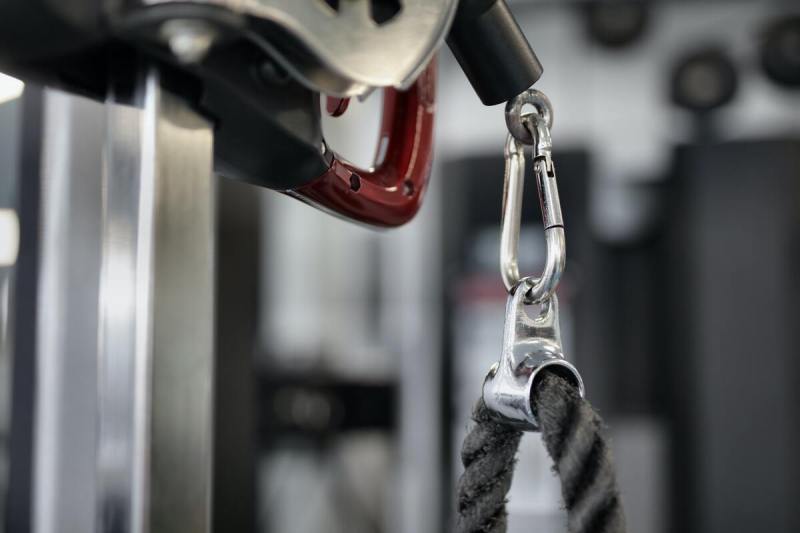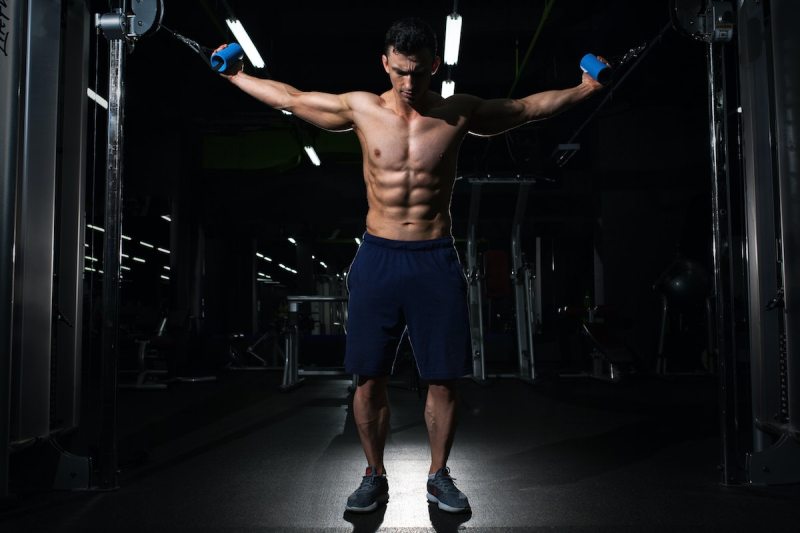Do you know that the buying and selling of specific exercise equipment generated about $5.5 million in the US alone in 2023? Many of these sales involve cable machines, as they are some of the most versatile, practical pieces of equipment for both home and commercial gyms.
Cable machines have a plethora of use cases, but they are well-suited to upper-body exercises. Many fitness enthusiasts particularly prefer cable arm workouts for the biceps and triceps as they may lower the risk of injury and prolong mechanical tension.
Away from arm exercises, let’s find out all the other ways to get swole or toned using cable machines!
Can you build muscle with cables?

Research comparing the use of free weights (dumbbells and barbells, for example) to machines shows that both types of resistance produce similar increases in strength and muscle mass.
So, as much as you can build muscle with free weights and even plate-loaded machines, you can do the same with cable machines. In fact, it may be easier and more effective to perform some movements like tricep exercises using cable machines.
How often should you train your upper body for results?

A 2016 review found that training a muscle group twice a week is better than training it once weekly. So, if you’re trying to maximize muscle growth, you’re better off training a muscle group twice or thrice a week instead of once. If you do an upper/lower split, you can easily train all the muscles in your upper body once a week in four total training sessions.
If you only have time for three sessions, a full-body split may be better. This means you aim to strengthen muscles in both the upper and lower body every time you train. By doing this, you can train your upper body three times a week, increasing both training frequency and muscle size and strength.
What are the benefits of using cables?

Constant tension
Cables provide constant muscle tension throughout an exercise’s entire range of motion, which is beneficial for muscle growth.
Versatility
Cable machines allow for a wide range of movements that can target muscles from various angles, helping with muscle isolation.
Control and Stability
The fixed path of motion with cables helps maintain form and control, reduces the risk of injury, and ensures the target muscles are engaged effectively.
5 cable upper body exercises

Chest flys
Chest flys allow you to train the chest without tasking the triceps too much and emphasize a deep pectoral stretch.
Instructions:
- Attach handles to the pulleys of a crossover cable machine on each side.
- Choose a weight that you can control but also challenges you for optimal intensity.
- Stand in the center of the cable machine and grab the handles with your palms facing forward and arms slightly bent.
- Lean forward and bring your arms together in a smooth, arc-like motion, ensuring you squeeze your chest muscles as you go. The movement should look like a hug.
- Perform 3 sets of 10 to 15 reps.
Tricep pressdowns

Tricep pressdowns or pushdowns are a great tricep workout to supercharge your strength training. At the same time, this movement reduces the risk of elbow pain or injury that free-weight options like skull crushers or close-grip bench presses may have.
Instructions:
- Attach any handle of your choice to a high pulley on a cable machine. This handle could be a rope, a V-bar, or a straight bar, depending on your preferences and what you have available at your gym.
- Grasp the bar or rope with an overhand grip.
- Stand upright with a small bend in your knees and your elbows close to your body.
- Push the bar or rope down until your arms are fully extended.
- Hold briefly at the bottom, squeezing your triceps.
- Slowly let the bar or rope return to the starting position.
- Do 3 sets of 8 to 12 reps.
Bicep curls

Bicep curls are everyone’s go-to bicep exercise because they get the job done. This exercise allows you to stretch and squeeze your biceps for maximal muscle contraction and gains.
Instructions:
- Attach a straight bar to the low pulley on a cable machine.
- Grasp the bar with an underhand grip.
- Stand upright with your feet shoulder-width apart and knees slightly bent, keeping your elbows close to your torso.
- Curl the bar or rope towards your chest, keeping your arms stable.
- Squeeze your biceps at the top of the curl and slowly lower the bar to the starting position.
- Perform 3 sets of 8 to 15 reps.
Lateral raises

Using a cable for lateral raises allows you to establish a seamless arm path to effectively target the side delts. Here’s how to perform this cable exercise for boulder shoulders.
Instructions:
- Attach a handle to the low pulley of a cable machine.
- Stand sideways to the machine and grasp the handle with the hand farther from it, palm facing in.
- Stand upright with feet shoulder-width apart, with a slight knee bend and your free hand holding the machine for balance.
- Keeping a slight bend in your elbow, lift your arm out to the side until it’s level with your shoulder.
- Pause for a second at the top of the movement, focusing on contracting the shoulder muscles.
- Slowly lower the handle back to your side in a controlled manner.
- Perform 3 sets of 8 to 12 reps with each arm.
Straight-arm pulldowns

Straight-arm pulldowns are a staple cable exercise for a bigger, more muscular back. This exercise targets the lats and other muscles in the back, such as the teres major.
Instructions:
- Attach a straight bar or rope to a high pulley on a cable machine.
- Grab the bar or rope with an overhand grip, hands slightly wider than shoulder-width apart.
- Stand upright with your feet shoulder-width apart, a slight bend in your knees, and a slight lean forward from the hips.
- With arms straight and elbows slightly bent, pull the bar or rope down to your thighs.
- Slowly raise the bar or rope back to the starting position, keeping your arms extended.
- Perform 4 sets of 8 to 12 reps.




